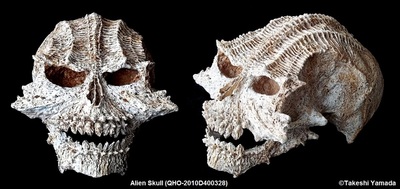A skull unearthed in East China might indicate that there is another branch to the human family tree, scientists have revealed.
A group of scientists from around the world have identified a unique human fossil in China that distinguishes itself from any other previously discovered hominin. It is not similar to the line of descent that gave rise to Neanderthals, Denisovans, or Homo sapiens, suggesting an additional chapter needs to be added to the current human family tree.
In the year 2019, the Chinese Academy of Sciences (CAS) were presented with the task of classifying bones of a hominin, labeled HLD 6, which were discovered in East Asia’s Hualongdong. Scientists have been unable to associate it with any known lineages.
The face of the hominin is reminiscent of the modern human lineage, which diverged from Homo erectus 750,000 years ago. However, the lack of chin on the individual is more similar to that of a Denisovan – an extinct species of ancient hominin from Asia that split from Neanderthals more than 400,000 years ago.
In partnership with scientists from China’s Xi’an Jiaotong University, the UK’s University of York, and Spain’s National Research Center on Human Evolution, researchers at the Chinese Academy of Sciences (CAS) believe they have identified a hitherto unknown ancestry – a combination of the branch that generated modern humans and the branch that created other ancient hominins in the region, like Denisovans.

Historically, many hominin fossils from the Pleistocene that have been found in China haven’t fitted easily into any one lineage. As a result, such remains are often explained away as intermediate variations on a straight path to modern humanity; as an archaic example of a Homo sapien, for example, or an advanced form of Homo erectus.

This linear, basic understanding has been the subject of debate and is not widely accepted. While Homo erectus did persist in Indonesia until roughly 100,000 years ago, the remains that were recently found in East China hold a greater resemblance to other, more modern lineages of hominin.
Previous studies conducted on genomes of Neanderthal found in Europe and western Asia have revealed indications of a fourth branch of hominin leaving in the Middle to Late Pleistocene.
But this missing group has never been officially identified in the fossil record. Perhaps the recent hominin remains found in China are a missing piece of the puzzle.

The authors of the analysis explain that the fossilized jaw and skull belong to a 12- or 13-year-old, and while its face has modern-human like features, the limbs, skull cap, and jaw “seem to reflect more primitive traits.”
Their results complicate the path to modern humans. The mosaic of physical features found in this ancient hominin instead supports the coexistence of three lineages in Asia – the lineage of H. erectus, the lineage of Denisovan, and this other lineage that is “phylogenetically close” to us.
Homo sapiens only appeared in China around 120,000 years ago, but it seems as though some of our ‘modern’ features existed here long before that. It may be that the last common ancestor of H. sapiens and Neanderthals arose in southwest Asia and later spread to all continents. More archaeological research is now required to validate that theory.





